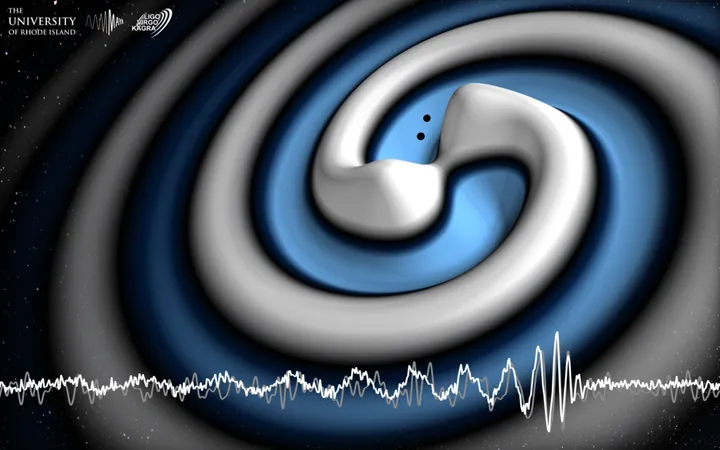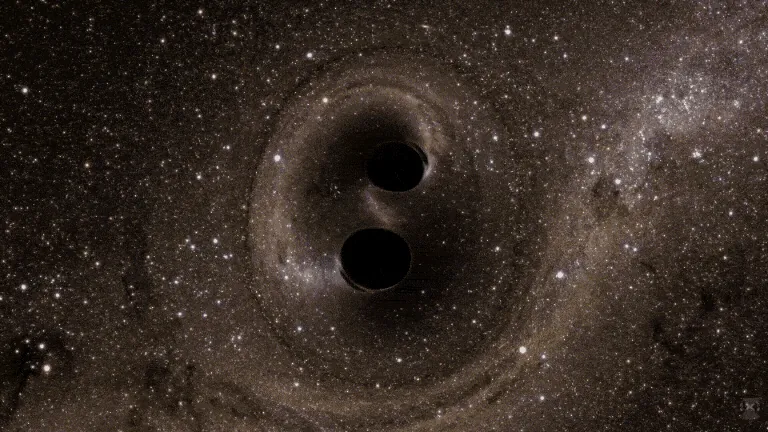
Why Intelligent Life May Struggle to Thrive Around Red Dwarf Stars
2025-09-15
Author: Charlotte
The quest for intelligent life around the cosmos is facing a significant hurdle, and it might surprise you to learn that red dwarf stars—the most common type in our galaxy—could be at the center of this debate. A leading theoretical biophysicist from the U.K. has made startling claims about the difficulties of oxygenic photosynthesis on planets orbiting these faint stars.
The Challenges of Life Around Red Dwarfs
Chris Duffy, from Queen Mary University in London, emphasizes that the available light from M-dwarfs is reduced significantly, creating conditions akin to deep shade on Earth. This means that complex forms of oxygen-producing photosynthesis could be nearly impossible, limiting life to simple organisms like cyanobacteria.
Photosynthesis: The Key to Life?
Photosynthesis is the process that enables organisms—from Earth’s smallest bacteria to towering redwoods—to convert sunlight into energy and grow. On Earth, this process predominantly takes place in the visible light spectrum, which spans 400 to 700 nanometers.
How Earth Got Its Oxygen
On our planet, oxygenic photosynthesis not only produced oxygen but also transformed Earth into a haven for aerobic respiration—an energy conversion method that fuels all multicellular life. Duffy explains that without the oxygen generated by cyanobacteria millions of years ago, it’s unclear whether complex life would have ever emerged.
Autotrophs: The Roots of Life
The earliest forms of life on Earth were single-celled organisms that thrived as soon as the surface cooled enough to support them. Photosynthesis allowed these autotrophs to emerge early in Earth’s history, laying the groundwork for an ecological explosion.
The Importance of Light-Harvesting Antennae
Plants and photosynthetic organisms utilize intricate structures known as antennae to optimize light absorption. These antennae gather photons from various wavelengths and funnel the energy to designated reaction centers where initial photosynthetic processes occur.
UV Damage: A Hidden Threat
Though plants rely on visible light for photosynthesis, they are not immune to the hazards posed by ultraviolet (UV) light. UV radiation can cause severe damage to DNA and proteins in these organisms. To combat this, plants have developed protective pigments that dissipate harmful energy as heat.
Detecting Life Beyond Earth
The presence of oxygen in the atmosphere of exoplanets could be detected through specific absorption patterns in starlight. Duffy points out that the 'red edge', a phenomenon first noted by NASA’s Galileo probe, serves as an iconic indicator of oxygenic photosynthesis on Earth, sparking interest in detecting similar signatures on distant worlds.
The Big Picture
Ultimately, the implications of Duffy’s insights are profound. The pivotal role that oxygenic photosynthesis has played in shaping Earth cannot be overstated. Our planet’s unique biosphere thrives on processes that, based on current understanding, may be nearly impossible in the environment of a red dwarf star.
In conclusion, while the search for extraterrestrial intelligence continues, the evolutionary demands of oxygenic photosynthesis around these dim stars suggest that we might be more unique than we ever imagined.









 Brasil (PT)
Brasil (PT)
 Canada (EN)
Canada (EN)
 Chile (ES)
Chile (ES)
 Česko (CS)
Česko (CS)
 대한민국 (KO)
대한민국 (KO)
 España (ES)
España (ES)
 France (FR)
France (FR)
 Hong Kong (EN)
Hong Kong (EN)
 Italia (IT)
Italia (IT)
 日本 (JA)
日本 (JA)
 Magyarország (HU)
Magyarország (HU)
 Norge (NO)
Norge (NO)
 Polska (PL)
Polska (PL)
 Schweiz (DE)
Schweiz (DE)
 Singapore (EN)
Singapore (EN)
 Sverige (SV)
Sverige (SV)
 Suomi (FI)
Suomi (FI)
 Türkiye (TR)
Türkiye (TR)
 الإمارات العربية المتحدة (AR)
الإمارات العربية المتحدة (AR)